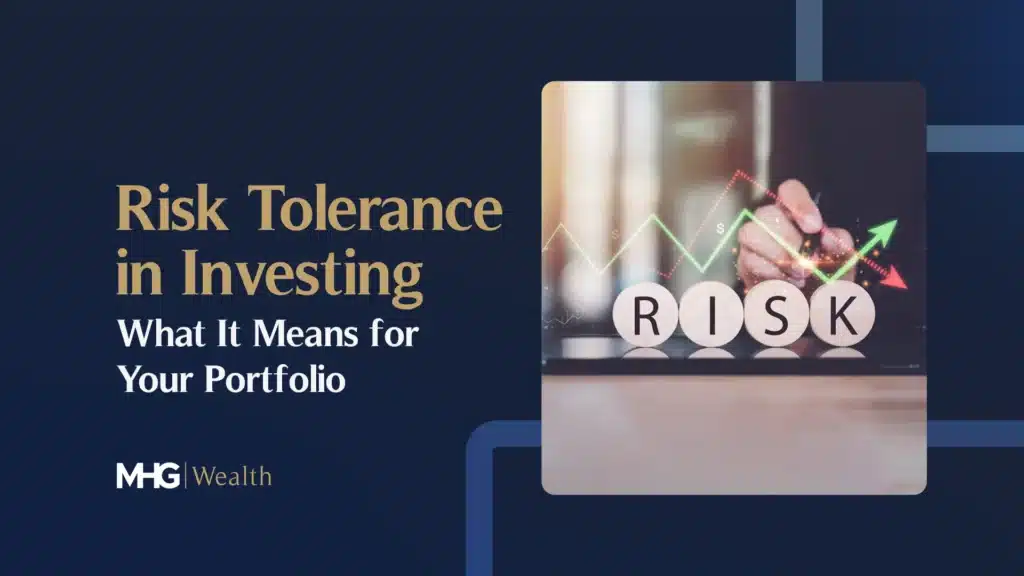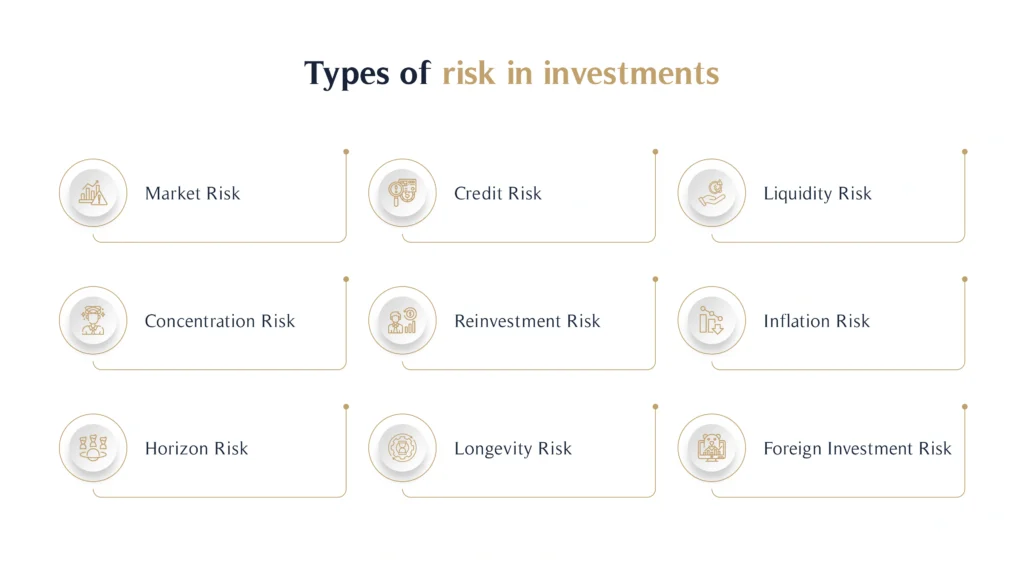When you’re new to investing, you need to know if, how, and to what extent you would cope in this situation. You need to know your risk tolerance.
As an investor, you’re usually saving for the future of you and your loved ones, but your finances are unique. And so is your risk tolerance. Understanding your financial risk is crucial when making investment decisions, as it helps determine the level of risk tolerance you are comfortable with while striving for long-term financial growth. If you know where you stand on the risk spectrum, you can then use that knowledge to help shape your investing strategy.
In this guide, we’ll explain the definition of risk tolerance, examine the types of risks you’ll find in investments, and look at the factors influencing risk choices.
Key Takeaways
|
Understanding risk tolerance
Risk tolerance refers to the boundaries of acceptable performance variation of each of your specific risks or performance objectives.
However, whether you can accurately gauge your personal appetite for risk is another matter. There is the danger you won’t find out what your appetite for risk is, until you have to deal with it, and by then it’s too late.
What are the different risk levels and their characteristics?
- Aggressive – wealthy people, willing to make high-risk investments due to their experience with the markets, are considered aggressive risk investors.
- Moderate – moderate risk investors make medium-risk investments, typically striking a balance between investing for growth through stocks, and income generations via bonds. A moderate risk is considered as a more balanced compromise between risk and reward than the other two risk levels.
- Conservative – these investors are mainly focused on preserving their capital, and are happy with the lower returns that a low-risk investments approach entails.
Risk appetite versus risk tolerance
Risk appetite broadly describes the amount of risk you or your organisation is prepared to take on in pursuit of strategic objectives, whereas risk tolerance helps you tie priority risks to measurable metrics. Such metrics will indicate whether you need to take action – and what that action should be.
Types of risk in investments
Various types of risk
These are the main types of risks – and how they relate to your investment options.
- Market risk – the risk of investments that might decline in value due to economic events, including equity risk (investment in shares), interest rate risk (debt investments including bonds) and currency risk (foreign investments).
- Credit risk – the risk that the company/government entity that issued a bond could have financial problems.
- Liquidity risk – the risk that you will be unable to sell an investment at a fair price, and/or get your money out when you want it.
- Concentration risk – the risk you will lose money because you have only concentrated on one type of investment.
- Reinvestment risk – the risk of loss if you reinvest principal or income at a lower interest rate.
- Inflation risk – the risk of loss in your power to purchase, due to inflation.
- Horizon risk – risk caused by an unforeseen event, such as the loss of your job, which can reduce your investment horizon.
- Longevity risk – the risk you outlive your savings, which can be the case if you’re retired or nearing retirement.
- Foreign investment risk – the risk of loss if you are investing overseas, for example in the shares of companies in emerging markets.
Medium-risk investments and their potential returns
When you make medium-risk investments, you need to be prepared to accept the value of your investments could fluctuate. You can aim to achieve higher returns in the medium-to-long term.
The value of medium risk investments can fluctuate quickly over short periods of time, when compared to low-risk investments.
Popular medium-risk investments include:
- Blue-chip stocks – shares in well-established, reputable companies.
- Mutual funds – pooling money from multiple investors to invest in a diversified portfolio.
- Exchange-traded funds (ETFs) – investment funds traded on stock exchanges.
- Corporate bonds – when you lend money to the issuing company, in exchange for regular interest payments.
Factors influencing risk choices
Personal factors
If you’re wondering what factors influence people’s choices in regards to risk, they are dependent on your personal situation. The most common are:
- Age – younger people tend to be able to take more risks than older people, because they have the ability to make more money while they are working, which helps to handle fluctuations in the market.
- Financial situation – naturally, wealthy people who are making money are more likely to make risky choices when investing, because they can afford to.
- Investment goals – the highest accumulation of money possible may not be what you’re looking for. The amount of money you may need for a specific goal is calculated, and to achieve that, you’ll adopt an investment strategy, which in return, requires a certain risk tolerance.
Psychological factors
Everyone has their own mental ability to take on financial risk. Psychological factors include:
- Past experiences – how have you coped with stressful situations in the past, and how will that influence your ability to handle risk in the future?
- Personality – are you naturally cautious, or prone to taking risks?
- Mood – you’re more likely to take risks if you’re in a good mood, and more prone to avoiding them if you’re not.
- Emotions – fear could affect your risk tolerance.
- Values – you might favour taking risks on companies that tie in with your beliefs, such as impact investing.
External factors
Your emotions and psychological makeup influence your risk appetite and tolerance, but other forces are also at play.
- Market conditions – if the market is healthy, you’re obviously more likely to take a risk.
- Economic trends – growth, taxation and inflation are influenced by governments and supply/demand at any given time.
- World events – as we’ve seen in recent years, events beyond our control, such as wars, the cost of living, pandemics and elections have an inevitable impact on the global financial outlook.
To achieve true potential growth in your portfolio, you need to be aware of your risk appetite and how it impacts on your risk tolerance. A balanced investment portfolio approach helps you to manage your finances.
Professional advice from a qualified professional will make a real difference to you and your wealth. At MHG Wealth, we’re committed to helping you achieve a strong financial outlook, so don’t hesitate to get in touch.






